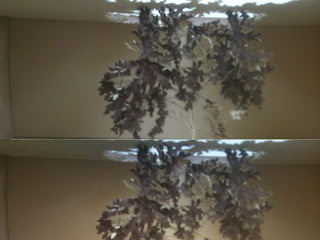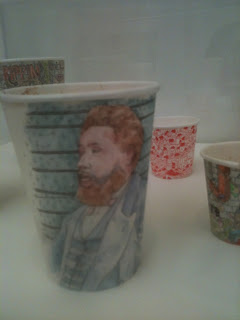The London trip was a little bit crazy, never been to so many galleries in the space of 48 hours. Some were really great other were not so good...and a lot of snobby gallery workers.
Drawing Room- Marking Language
The first one we found was at the Drawing Room called Marking Language. It really wasnt my thing i knew this before going but my friends wanted to go. The space was a bit too clinical and too much 2D stuff for my liking! One part i did find interesting were the conversational drawings of hands speaking sign language. I like the idea of a written language without words and the simplistic outline drawings worked really well.
Quote from drawingroom.org.uk/exhibitions/marking-language
'Throughout the twentieth century, and in particular since the 1960s, artists have mined language for the subject and matter of their art, incorporating the mode, format and meaning of text into their work. For their first collaborative project, Drawing Room, London and The Drawing Center, New York, will present parallel exhibitions that explore the relationship between linguistic communication and drawing in recent art. The selected artists take language and the written word as the subject of the work itself, rather than to influence interpretation of an accompanying image. Together the two exhibitions present an international selection of artists from the United Kingdom, Belgium, Colombia, Greece, Lebanon, Norway, Sweden, Argentina and the United States. Collectively these artists demonstrate an inventive use of words and text, creating works that are visually rich and that evoke multiple meanings.
Marking Language could be read as a series of propositions, or positions, that consider the relationship between drawing and written communication in contemporary practice. It takes work being made today, by seven artists, of roughly the same generation but originating from very different parts of the world, to explore this rich territory. The artists in Marking Language use a range of strategies to divorce language from a linear narrative, for example, by fragmenting words and phrases, or by including multiple and contradictory graphic languages, and giving form to phonetic words and expressions. The work can be seen as a reflection of the fragmentation of reality, despite the illusion of world-wide connection, and a yearning for intimate and meaningful dialogue.'
Pavel Büchler, Johanna Calle, Annabel Daou, Matias Faldbakken, Karl Holmqvist, Bernardo Ortiz, Shahzia Sikander
White Cube
The White Cube we found by accident on the way to the station. It was set quite far back from the path through large gates and looked empty so we were really unsure what it was. It wasn't till we awkwardly walked closer to the big glass doors that we could see work inside. The awkwardness continued as it was completely silent and we were followed throughout the whole gallery but i still managed to get some pictures...even if they are quite blurry as im trying to run away.
Mark Bradford
Through Darkest America by Truck and Tank
Larry Bell
Mirage, Collage and the Light Knots
I really loved Larry Bells work, Im still unsure how the large portraits were made. Some parts looked like they have been scanned, other parts look like photographs but then the images manipulated to alter the opacities and reveal layers. The hanging sculptures were created by cutting figures that were photographed in motion into the material then twisted into 'light knots.'
In this exhibition Bell will present a new series of works on paper and sculptures that further these investigations into perception, form and illusion. By applying the same vacuum coating process to various coloured papers, mylar laminate and films, Bell has produced a collage made up from interwoven coated materials in pure vivid hues. In his works on paper, he adopts a ‘Seated Nude’ motif by cutting out the curved form in coloured papers and film to suggest a female figure, dissolving alchemically in and out of abstraction. Early on in his career Bell was a keen photographer, using a panoramic camera to shoot the figure in motion, focusing on the distortion inherent in the movement of say a rolling or seated nude. Drawing from this imagery he cuts the curved forms of a figure into pieces of treated Mylar laminate and then manipulates them into what he describes as a 'light knot’. Suspended from the ceiling these mirrored ‘knots’ teasingly move, their forms evolving magically through the surrounding, refracted light.
In Cube“24-2-92” (1992), Bell continues to play with our perception by printing daguerreotype-like forms and grids onto the six sides of this multi-dimensional sculpture. Equally the ‘Mirage Paintings’ employ similar tricks on the eye, as they appear to be works on canvas but are actually formulated from many layers of coated materials, acrylic paint and semi-transparent laminates that act as an adhesive on the picture plane. Bell comments: ‘I called them ‘Mirage Paintings’ because the images were created with heat and light’.
‘Visibility depends on the action of the visible bodies on light. Either a body absorbs light, or it reflects or refracts it, or does all these things.’
The Invisible Man, H G Wells (1897)
The Saatchi Gallery
Bond Street Galleries (Cant remember the names.)


























































